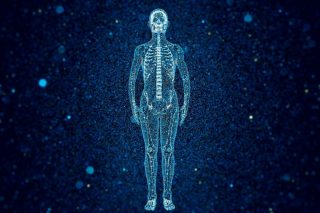Do Bone Scans Show Cancer?

While finding abnormalities in medical testing might be unsettling, identifying problems early is crucial to the successful treatment of many illnesses, including cancer. Naturally, more imaging tests are ordered to establish a diagnosis when anomalies on bone scans reveal issues such as malignancies. However, in identifying possible indications of bone cancer, what may specific nuclear imaging and CT scans at reliable diagnostic facilities like ViaScans reveal? During bone density examinations focused on health rather than disease, knowing how to interpret test findings can help reduce ambiguity about the results.
Although the primary purpose of conduction scans to assess bone mineral levels is to identify osteoporosis, we occasionally find suspicious hot patches that might indicate cancer. Most individuals anticipate evaluations of their bone strength rather than cancer discoveries. Therefore, uncertainty over the scope of these investigations and the next steps to take if suspicious behavior occurs frequently arises when faced with unexpectedly uncertain outcomes. We will elucidate the capabilities and limits of the scans used to assess bone health, looking for cancers.
What is a Bone Density scan?
A bone scan is used to identify a wide range of illnesses and issues related to the bones. A radioactive tracer is used in small amounts throughout the process to highlight potential bone injury in locations where the body has absorbed too much or too little. During your diagnostic testing, your doctor could do a bone scan to rule out the possibility that the bone deterioration is related to cancer.
When cancer is suspected, a bone scan can be very useful because it can detect bone metastases, or cancer that has spread from another region of the body to the bones, as well as primary cancer, or cancer that originated in the bones. Bone metastases can occur from a variety of malignancies, including lymphoma, lung cancer, and breast cancer. Additionally, a bone scan can detect abnormalities in your bones far earlier than a standard x-ray would.
What Does Cancer Look Like on a Bone Scan?
Increased blood flow and bone development are common immune responses from cancerous tumors. Therefore, malignancies typically appear as concentrated or abnormally bright patches on a bone scan, sometimes known as “hot spots.” The cancer’s severity is then determined by its location.
For instance, in areas where tumors frequently form, such as the long bones of limbs, bone cancer may manifest as a solitary hot spot. Metastasizing of bones is a common occurrence for some malignancies, such as prostate and breast cancer. They show many dispersed heat spots throughout the bones. Nevertheless, comparable patterns can also result from non-cancerous illnesses. Therefore, the major use of bone scans is to screen for malignancy. Other imaging procedures, including biopsies and CT scans, verify the diagnosis.
How is Bone Cancer detected?
Numerous tests and instruments are used by a multidisciplinary team of specialists in bone cancer to diagnose the illness, assess it, identify the damaged bone or bones, and create a personalized treatment plan.
Tests to detect Bone Cancer include:
- Bone Biopsy
- Bone Scans
- X-rays
- CT Scans
What is the Best Scan to Detect Bone Cancer?
1. Bone Scan: A nuclear medicine exam that covers the whole skeleton and effectively screens for lesions using radioactive tracers. It is incredibly sensitive, but it doesn’t include a lot of cancer-specific information.
- CT scan: Creates three-dimensional cross-sectional pictures of bones using computers and X-rays. Improved tumor visualization and tissue invasion detection.
- Bone Density Scan: calculates the density of bones. The findings of a Bone Density Scan can give important information regarding your risk of fractures and osteoporosis (bone loss). Your body composition, including your muscle mass and body fat, may also be measured with this test.
Can a Bone Density Scan Show Cancer?
A low-radiation X-ray examination known as a Bone Density Scan, or bone density test, quantifies bone mineral density to identify osteoporosis. It looks at common fracture locations like the spine and hips.
Bone cancer cannot be evaluated using Bone Density Scan. However, very infrequently, it could happen to notice odd alterations that might point to cancer. For example, a single dense bone growth or an unexplained localized increase in density. Cancer cannot be ruled out or proven without more testing. To thoroughly screen for tumors, the doctor would probably request more sensitive bone scans, CT scans, or biopsies if any questionable areas are seen.
What other purposes do medical professionals employ Bone Density Scans?
Medical professionals can also order a Bone Density Scan to:
- Monitor changes in bone health throughout time.
- Keep an eye on how your treatment—such as an osteoporosis medication is doing.
- Analyze your body’s composition, including muscle and fat.
Does a Bone Density Test Show Cancer?
A Bone Density Scan (dual-energy X-ray absorptiometry) or bone density scan uses low-dose X-rays to determine your bone mass. Conventional bone density evaluations using Bone Density Scan don’t look for malignancy. Their use is restricted to determining the mineral concentrations in bone to identify weakening conditions such as osteoporosis. To compare bone strength at high-risk fracture sites, they mostly take pictures. However, physicians may investigate malignancies further if patients have symptoms like localized bone pain and osteopenia on scans. Additionally, baselines for calculating malignancy risk in routine follow-ups for early detection can be established using Bone Density Scan findings.
When Should You Opt for a Bone Scan?
See a doctor about having a bone scan if you have ongoing or increasing bone pain, especially if you’re older and suffering bone pain. Backaches and limb discomfort that don’t go away or interfere with sleep or activities should be checked out. A bone scan can identify:
- Potential fracture
- Effects of medications, age, or illness
- Tumors spreading into the bones.
- Bone infection
- Develepment problems in kids
If you are at high risk, schedule routine exams and practice healthy lifestyle behaviors to be on the lookout for bone health issues. This makes it possible to identify problems early and handle them effectively.
Choose Our Bone Scan
Early Detection Saves Lives !
-
- Accurate
- Quick Result
- Affordable

Conclusion
Although bone scans can identify early indicators of potential bone cancer, further testing is required to confirm the diagnosis. They offer cost-effective and efficient whole-body imaging to pinpoint problem regions. However, the existence and spread of malignant bone tumors can be more accurately determined by CT scans or by biopsy data. Bone scans are widely sensitive, making up for their lack of specificity. They provide the first cues that something is wrong, opening the door for focused research. Combined with other scans, they aid in early cancer detection, enabling timely treatment to preserve life and bone.
FAQs
Will I get osteoporosis if I have family members who have it?
One is more likely to acquire osteoporosis if there is a significant family history of the condition. You now have access to crucial information that you can use. Aim for a healthy weight, engage in weight-bearing exercise, and cut back on bad habits like smoking, vaping, or drinking too much alcohol.
Does the bone density test need me to fast before it?
No, although many testing facilities request that you refrain from taking calcium supplements the day before the test. This is because the pill may make one of your spine bones less visible when it passes through your digestive system.


